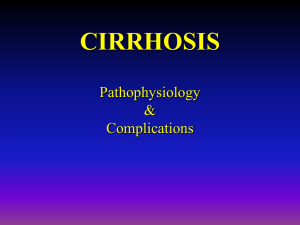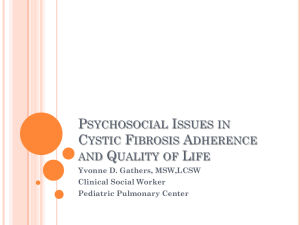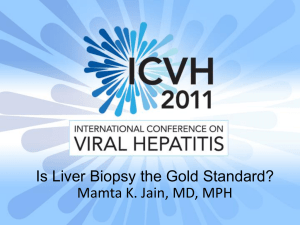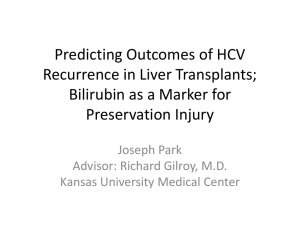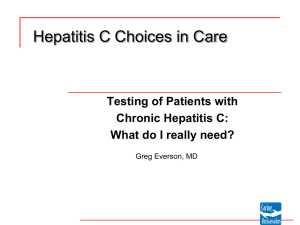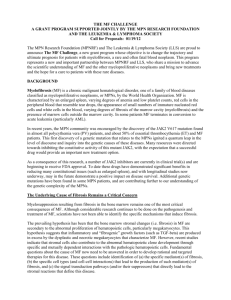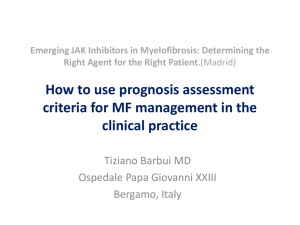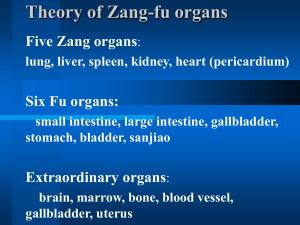Lithuanian University of Health Science
advertisement
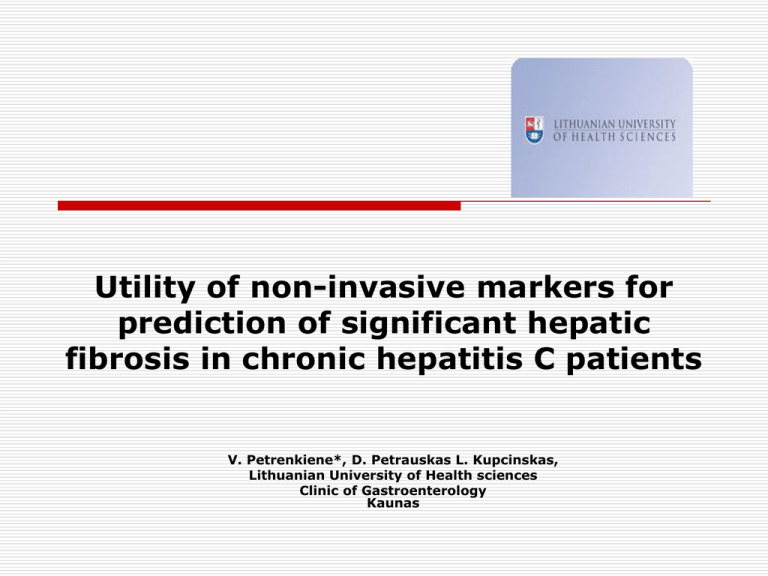
Utility of non-invasive markers for prediction of significant hepatic fibrosis in chronic hepatitis C patients V. Petrenkiene*, D. Petrauskas L. Kupcinskas, Lithuanian University of Health sciences Clinic of Gastroenterology Kaunas BACKGROUND • Over the past decade many studies have evaluated noninvasive tests of liver fibrosis to assess the presence and severity of fibrosis in chronic liver diseases. • Non-invasive markers and commercial tests of liver fibrosis have been proposed and assessed in the clinical setting as surrogates of liver biopsy. • However, their implementation in clinical practice is slow and still limited. AIM To determine the utility of non-invasive markers using routine laboratory tests for the prediction of significant fibrosis and cirrhosis in a cohort of chronic hepatitis C (CHC) patients METHODS (1) Inclusion criteria • Treatment naive 18-70 years old CHC patients with serum HCV-antibody and HCV RNA positivity. • Having liver biopsy between Jan 2000 and Nov 2005 with sufficient liver tissue for fibrosis staging (>7 intact portal tracts). • Having a blood sample drawn for the measurement of the liver panel and blood counts one day before the biopsy and abdominal ultrasound examinations with measurement of spleen diameter. • Patients without a history of alcohol intake (> 30 g/day for males and 20 g/day for females). • No evidence of other liver diseases. METHODS (2) Biopsy: Menghini 14-gauge needle; Histology: Knodell–Ishak fibrosis staging system on a scale F0-F6 (Masson trichrome stain). 1. Fibrosis of some portal areas. 4. Fibrosis with P-P and P-C bridging. 2. Fibrosis expansion of most portal areas. 5. Incomplete cirrhosis. 3. Fibrosis with occasional (P-P) bridging. 6. Cirrhosis, probable or definite. Staging was performed blinded to clinical data by one expert pathologist. METHODS (3) Indirect non-invasive tests of liver fibrosis used 1. AAR - AST/ALT. 2. Platelet count. 3. APRI - AST/platelet count (×109/l)×100. 4. GUCI (the Göteborg University Cirrhosis Index):AST×prothrombin(INR)×100/platelet count (×109/l). 5. Platelet count/spleen diameter ratio index. METHODS (4) Flow diagram of the potential candidates for participation in the study 402 CHC PATIENTS REGISTERED FROM January 2000 UNTIL November 2005 43 patients with insufficient liver sample 31 patients with incomplete data 323 CHC PATIENTS INCLUDED F 0-2 N=148 F 3-6 N=175 5 patients with active alcohol abuse F 5-6 N=67 RESULTS (1) 323 naive CHC patients 194 (60.1%) male 129 (39.9%) female Mean age: 48.5 year Histological staging F0 6.5% (n= 21) F1 13.9% (n= 45) F2 25.4% (n= 82) F3 23.5% (n= 76) F4 9.9% (n= 32) F5 3.7% (n= 12) F6 17.0% (n= 55) METHODS (5) Statistical analysis • Quantitative data were expressed as mean and standard error (SE). • The variation in the proportions were assessed using Chi-square test. • P values of 0.05 were considered significant. • The diagnostic value for each marker was assessed using the area under the receiver operating characteristics curves (AUROC). • Statistical analysis was carried out using the SPSS 12.0 software package. Results (2) Variables for predicting significant fibrosis and cirrhosis Prediction of significant fibrosis (F3-F6) AUC (95%CI) Prediction of cirrhosis (F5-F6) AUC (95%CI) Platelet count 0.69 (0.49-0.71) 0.85 (0.72-0.89) AAR 0.65 (0.59-0.72) 0.76 (0.69-0.83) APRI 0.73 (0.68-0.79) 0.89 (0.84-0.94) GUCI 0.74 (0.69-0.79) 0.89 (0.85-0.95) Platelet/spleen diameter 0.71 (0.65-0.77) 0.88 (0.88-0.93) Variables RESULTS (3) Cut-off points to predict the absence or presence of significant fibrosis and cirrhosis Significant fibrosis (F3-F6) Cirrhosis (F5-F6) Presence Absence APRI ≥1.5 <2.0 Platelet/spleen diameter <1.5 >1.5 AAR ≥1 <1 GUCI >1.5 <2.0 <150 x10(9)/L ≥ 150 x10(9)/L Variables Platelet count RESULTS (4) Sensitivity, specificity, positive (PPV), and negative (NPV) predictive value of evaluated parameters in detecting significant (F 3-6) fibrosis Variables Sensitivity % Specificity % PPV % NPV % Accuracy % Platelet count 42.5 87.8 80.4 56.5 63.4 AAR 46.8 89.2 83.7 58.7 66.3 APRI 81,4 61.7 79.5 70.7 72.1 GUCI 58.0 81.5 58.0 38.0 68.8 Platelet/spleen diameter 56.1 79.5 76.4 60.4 60.2 RESULTS (5) Sensitivity, specificity, positive (PPV), and negative (NPV) predictive value of evaluated parameters in detecting cirrhosis (F 5-6) Variables Sensitivity % Specificity % PPV % NPV % Accuracy % Platelet count 73.1 83.1 52.3 92.2 81.1 AAR 80.1 81.6 50.0 92.9 80.5 APRI 83.6 85.5 60.2 95.2 85.1 GUCI 83.6 82.6 56.0 95.0 82.8 Platelet/spleen diameter 87.8 72.7 45.7 95.8 75.9 CONCLUSIONS (1) • Non-invasive tests of liver fibrosis based on a few standard laboratory tests: APRI, platelet count, AST/ALT ratio, GUCI, platelet count/spleen diameter ratio are useful to predict advanced fibrosis in HCV-infected patients and can bee used in clinical setting when liver biopsy is not available (outpatient care, regional hospitals). • Prediction of cirrhosis (F5-F6) by simple non-invasive tests is superior to prediction of significant fibrosis (F3-F6). CONCLUSIONS (2) • Implementation of fibrosis markers using routine laboratory tests can reduce, but not completely eliminate, the need for liver biopsy. • Therefore, liver biopsy still remain a ‘gold standard’ for assessment of liver fibrosis in tertiary hospital setting. Kaunas, Lithuania
